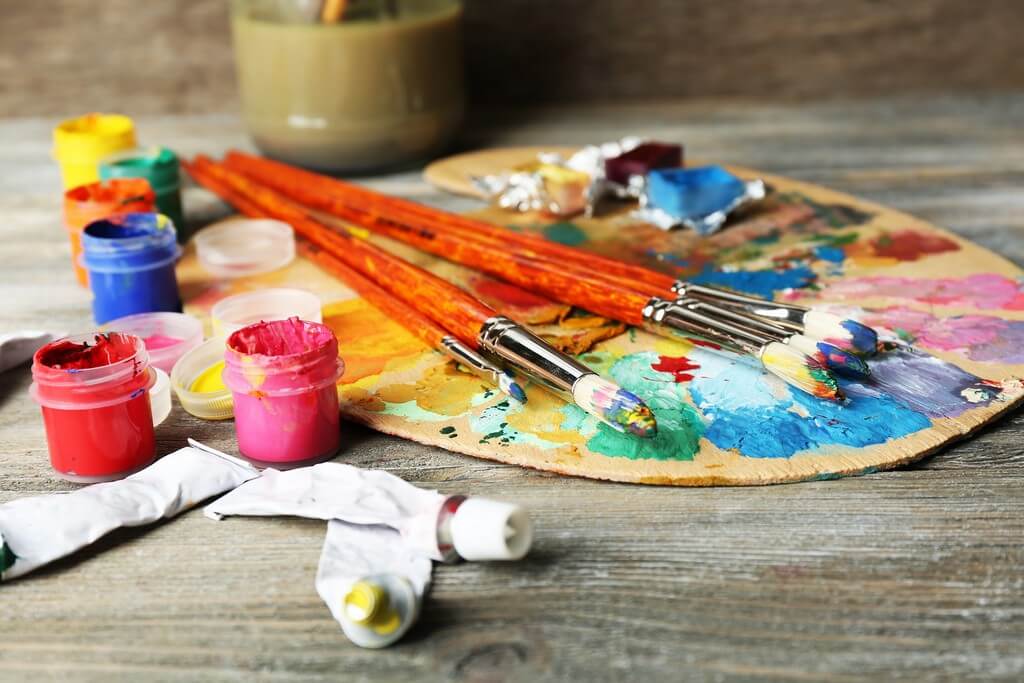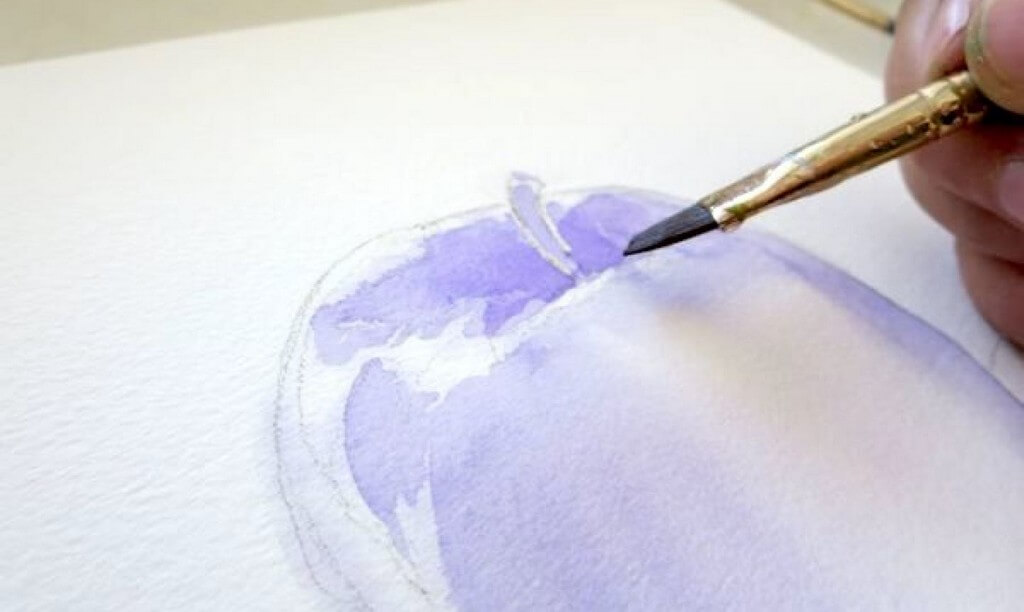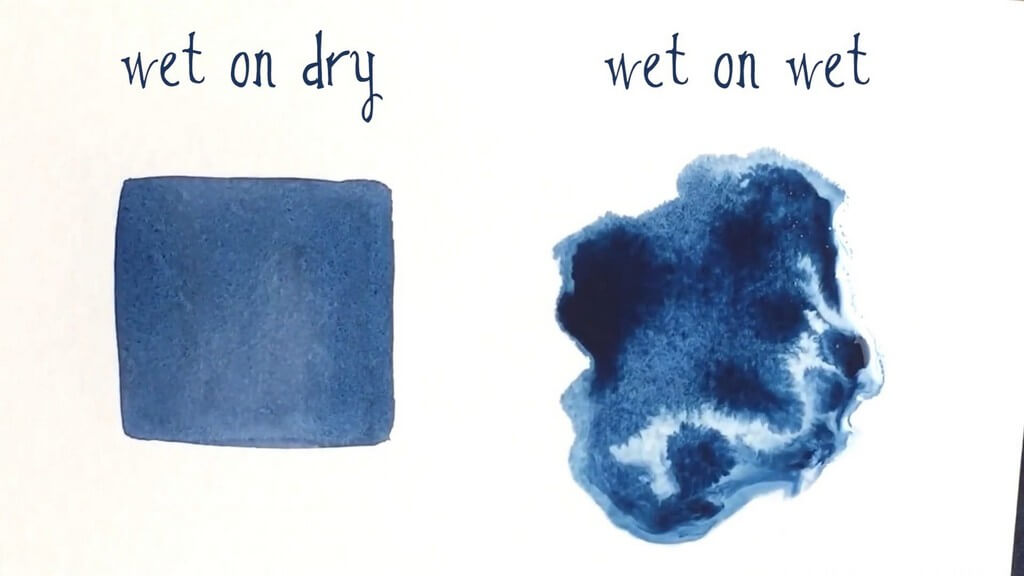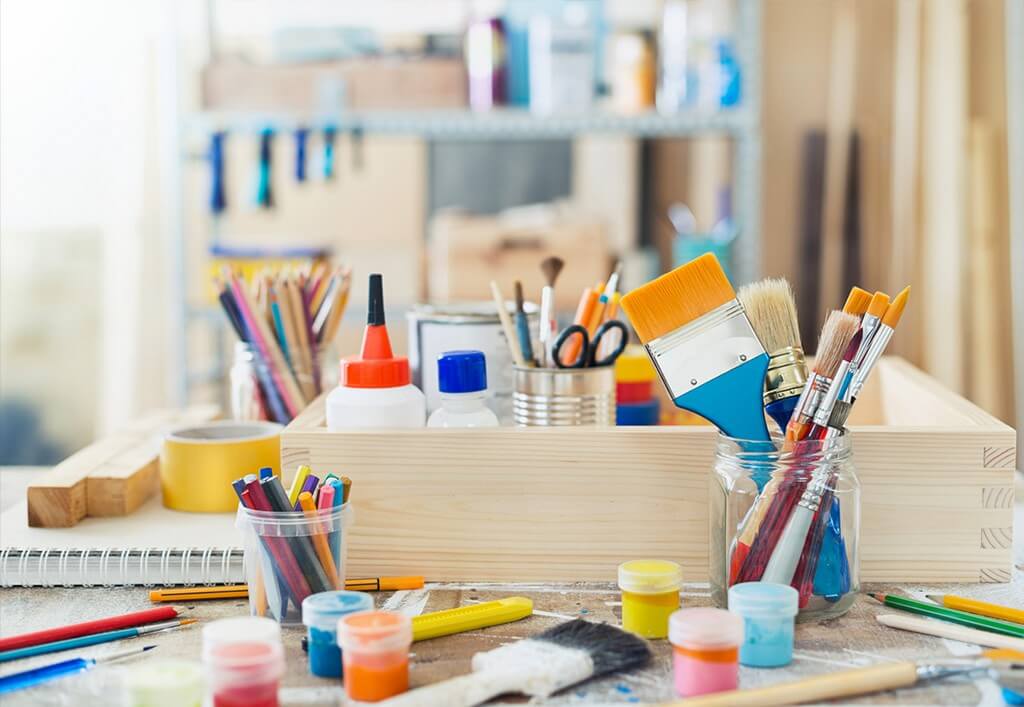Tips On Using Watercolors!
17/08/2021 2021-08-17 17:05Tips On Using Watercolors!
Tips on using watercolors can vary from person to person. Using a particular medium of art can be difficult in the initial stages, but once you get the hold of how the medium works and the flow of colors, it gets easier. But in order to understand watercolors, the phrase, ‘Practice Makes You Perfect’, is the best way to say it. Watercolor is one of the most demanded mediums of art in the fashion industry as it helps bring out the flow and feel of the fabric with the design. It is definitely a challenge because of the consistency of the liquid and color used in the medium. Here are some basic tips on using watercolors:
1. Genuine Art Materials:

Good quality paint mean perfect painting
It is one of the most important things to make sure no matter which art medium you choose to use. If the materials used aren’t of a good quality, then it is equivalent to waste of money and time. Especially, when it comes to watercolors, your interpretation of design may not turn out the same on paper, if the quality isn’t up to the mark.
a. Paper:
Every paper is unique, as it is created using different methods. Although when using watercolors, it is important to make sure that you use actual watercolor paper.If regular paper is used to paint with watercolors, than the medium will tend to spread across the sheet, but when using watercolor paper it will only be absorbed by the areas that are intended to be in.
Watercolor paper is made by beating fibre into sheets for one to four hours, until it is made into a felt. This is the reason that the paper is perfect for watercolor mediums. It is recommended to use 400GSM paper.
b. Paint:
Watercolor paint comes in both tubes and pans giving one the option of best of both worlds. Either way, no matter which packaging you choose, make sure that the quality of the paint is good. If the quality is low, then the paint will not have a smooth finish.
c. Brushes:
It is not necessary to have an assorted brush set in order to use watercolors. Although it is important to keep six important brushes in your set, when using watercolors – spotter brush, flat brush, round brush, mop brush, liner brush, and fan brush. These brushes are more than enough to start using your watercolors. It is also important to use synthetic brushes rather than natural bristle brushes as they will absorb the paint and not be as effective.
2. Move from Light to Dark

The best way to learn watercolors is to start from a lighter base and build up to the preferred darkness as per the design requirements. The reason you start with the lighter shade of paint, is because once the darker shade is laid down, it is hard to undo it. Since the light shade is more transparent, it will not be shown when the color is being built-up. It is best to plan ahead as the light and white areas of the painting will be from the paper, Masking the fluid is the great way to reserve areas of white in your painting.
3. Ratio – Water Is To Paint:
When it comes to choosing the ratio of water to paint, it is completely dependent on the artist’s ideology.
a. When is it too much water?
When you see that the color build-up isn’t as dark as you want it to be and the smudging begins, then you know that you have used too much water. The more water you use, the lighter the color will appear.
b. When is it too little water?
When the brush strokes are more evident, the paint isn’t smoothly applying itself on the paper and there is a thick layer of paint on the sheet, which indicates that water consistency in the paint isn’t enough.
4. Wet On Dry Technique and Wet On Wet Technique:

There are numerous techniques on using watercolor paints, but like many other painting techniques, there are two basic ones:
a. Wet On Wet Technique:
In this technique, you apply strokes of water onto the sheet or canvas before beginning to paint on it. Along with which, it goes unsaid, that the paint brush also needs to be wet in order for the paint to hold onto the brush. Since both the sheet and the brush/paint are wet, it is known as the ‘Wet On Wet’ technique. Using this technique will not give you much control over the brush strokes, and will create spontaneous strokes.
b. Wet On Dry:
Here, the sheet does not consist of any water, making it the dry part of this technique. In this technique, there is more control over the strokes, making it easier to achieve much more detailed areas of the illustration/idea.
5. Time To Dry:

There is no fixed time to dry the painting. It is all based on the preference of the artist. If you require the colors to blend and bleed together then you can layer the colors on top of each other, but be careful that the colors aren’t over layered as they will lead to creating a mud brown color. If detailing over the base colors is required then it is best to let the base completely dry before using more shades or color over it, as it will help give the painting a final definition if need be.
6. Mixture Of Colors:
When it comes to mixing paint together, there is no concept of ‘too much’. It is best to always mix a bit more than the required amount of paint as it will get difficult if the paint mixture is over and you need to mix again, in the same shade.
7. Workstation And Supplies:

Organisation is the key to all problems, even when it comes to painting. LKeeping everything that you may need before you begin to create your masterpiece, will help you avoid any kind of unnecessary disturbance once you start. Here is a list of things, basic things that you will need before you begin painting:
a. Tissues: Known as the best friends of watercolors, as it can be used to clean the brush, dab the brush when you need to reduce the pigmentation or the water consistency, and even if you need to dab the watercolor paper if the paint got in a bit more than required.
b. Palette: A tool that goes without having to be mentioned about. It is where you create the colors and shades that you require for your painting.
c. Rough Sheet: As we have used it for solving quick math problems, it can also be used to test out the shade and stroke of the color before using it on the actual canvas or paper. It is recommended to use similar sheet texture as your final canvas or paper in order to get the best results.
d. Masking Tape: It is known as the other best friend of watercolors. It is mainly used to bring definition to the painting, and the clean cut edges.
e. Workstation Set-up: Once you have gotten everything you need in order to effectively complete your painting, place or arrange them onto your work desk or floor, in such a way that they are accessible and in a reachable position to your hands.
Tips on using watercolors are more than the above, but these are the basic things that one needs to keep in mind when new to the medium of art. It is also important to keep your art tools, such as your paint brush, palette, and paint pan clean. Despite the fact that watercolors are one of the most demanded mediums for fashion illustration, many find it hard to use and have moved to digitizing their illustration. As easy and upgraded as it may be, it is always better to know your basic mediums of hand illustrations, for which it is important to learn every form of art in their fashion designing course.













